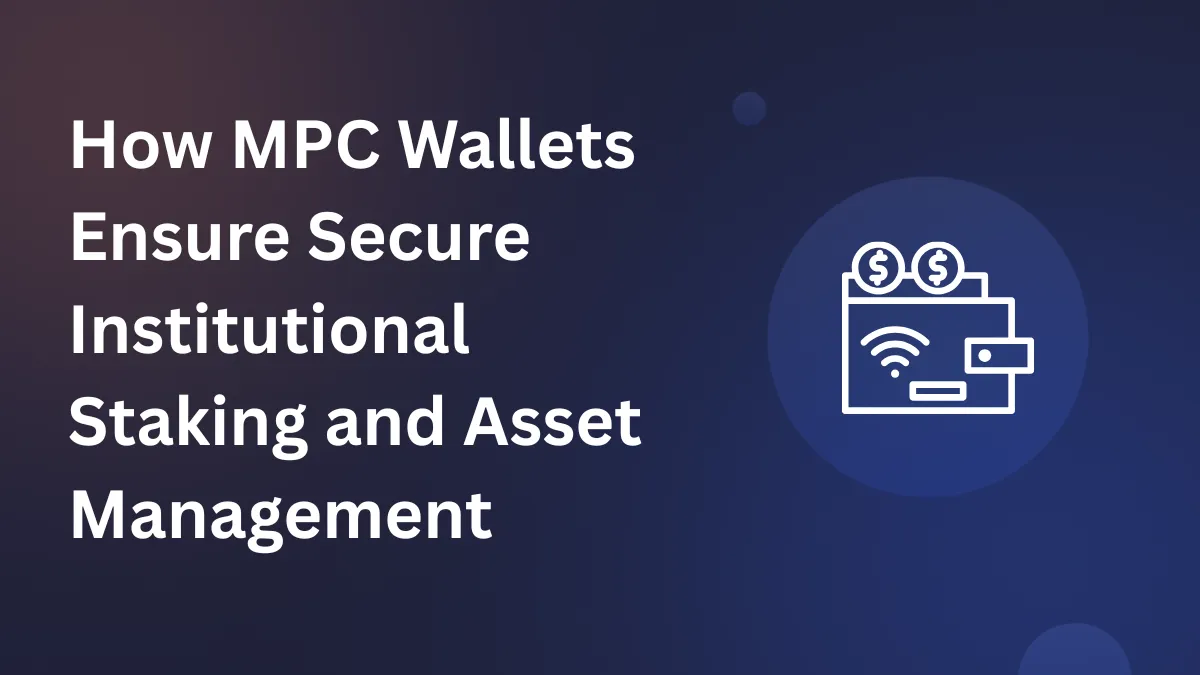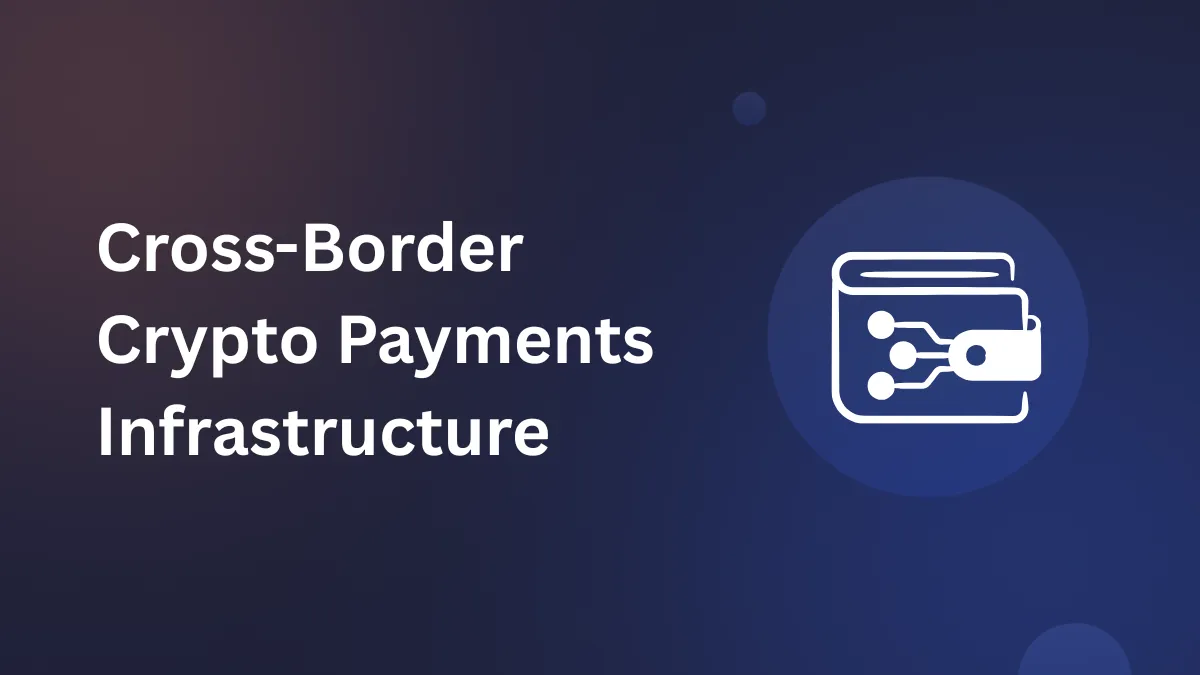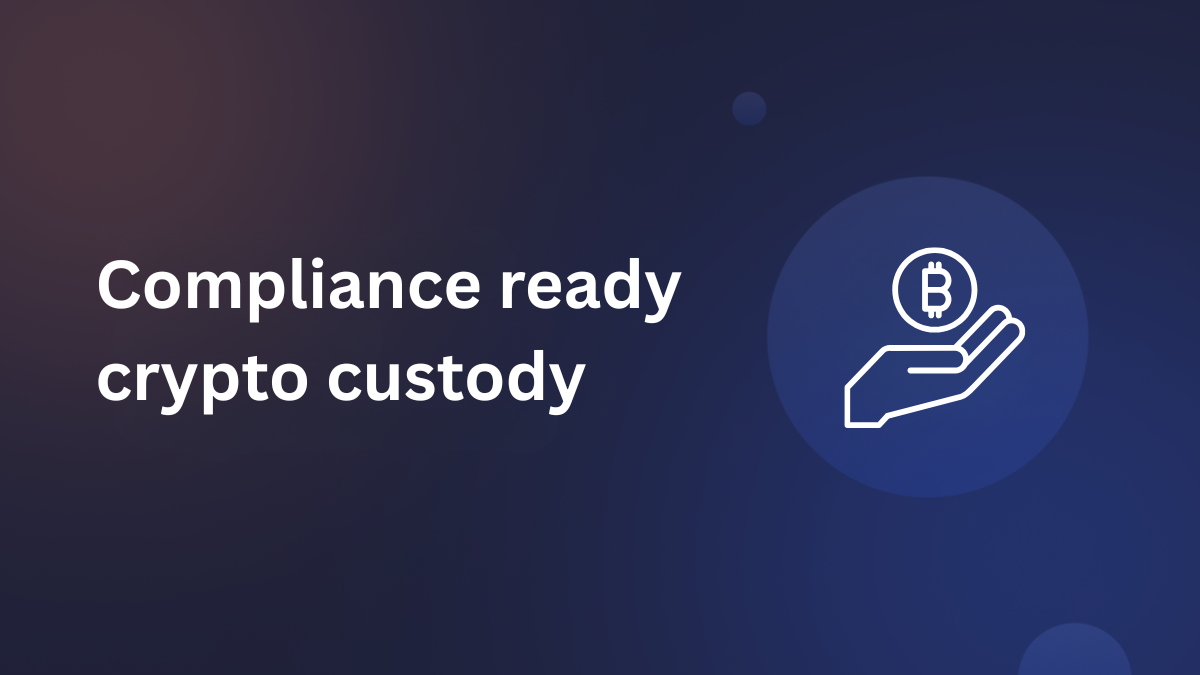Crypto mining vs crypto staking are two different methods that support PoW and PoS consensus algorithms. These algorithms help blockchain networks mint new tokens as well as validate new transactions. In the following sections, we’ve discussed the fundamentals of each consensus method, plus their upside and downsides in-depth.
Key Takeaways
- Mining is a process of minting new cryptocurrencies by solving highly complex problems that help verify and validate transactions in a cryptocurrency.
- Staking cryptocurrency is a process that involves committing your digital asset holdings to back a network and validate transactions over the network.
Unlock the potential of digital assets for your institution
What is Crypto Mining?
Crypto mining is a process that involves solving complex computational problems using advanced computer algorithms in exchange for cryptocurrency. Cryptocurrency operates on a decentralized blockchain, which means that no central entity is responsible for verifying its authenticity.
The blockchain is maintained by miners, who are responsible for verifying new transactions by solving complex computational problems. This process updates the general ledger and ensures the integrity of the blockchain.
Miners are incentivized to perform this work through rewards. The rate and terms of these rewards can vary depending on the cryptocurrency and the difficulty rate of mining on the network. Typically, rewards are earned at the point at which the network mines each new block.
Secure and manage your digital assets with Liminal
Crypto mining serves as an auditing process that authenticates the validity of transactions and adds them to the blockchain. As completed blocks are added to the blockchain, it allows for transparency since the data is available to the entire network.
While anyone technically can mine cryptocurrency, it is no longer easily accessible to the general public due to the high-level computational technology involved. This includes advanced graphics cards, motherboards, and other hardware. Today, such a high level of computing power is required that it is out of reach for many people. Gaming PCs are the most commonly used hardware for mining Bitcoin.
Overall, crypto mining is an essential process that helps maintain the blockchain’s integrity and transparency. Although it is no longer easily accessible to the general public, it remains a significant way for individuals and organizations to earn cryptocurrency rewards.
What is Crypto Staking?
Crypto Staking is an alternative method of validating the blockchain, which differs from the traditional process of mining. It entails purchasing cryptocurrency with the intention of holding it for an indefinite period.
When staking, you transfer your cryptocurrency to your digital wallet so that the network can use these coins to validate transactions. Similar to crypto mining, the blockchain requires the validation of new transactions. The blockchain protocol selects validators from those who have staked their coins. Individuals who stake a greater number of coins are more likely to be chosen for this role.
Upon validating a new block and appending it to the blockchain, the validator of that block is rewarded with new coins. The rewards typically vary in Annual Percentage Yield (APY) and may fluctuate based on the total number of participants staking on the network. Therefore, it is advisable to conduct thorough research before engaging in staking, as some programs may have substantial lock-up periods.
Crypto mining serves as an auditing process that authenticates the validity of transactions and adds them to the blockchain. As completed blocks are added to the blockchain, it allows for transparency since the data is available to the entire network.
While anyone technically can mine cryptocurrency, it is no longer easily accessible to the general public due to the high-level computational technology involved. This includes advanced graphics cards, motherboards, and other hardware. Today, such a high level of computing power is required that it is out of reach for many people. Gaming PCs are the most commonly used hardware for mining Bitcoin.
Overall, crypto mining is an essential process that helps maintain the blockchain’s integrity and transparency. Although it is no longer easily accessible to the general public, it remains a significant way for individuals and organizations to earn cryptocurrency rewards.
Difference between Crypto Mining vs Crypto Staking
Crypto mining and staking are two popular methods for earning cryptocurrencies. While both processes involve contributing resources to a blockchain network, they are fundamentally different in their approach and the rewards they offer.
Crypto Mining
Crypto mining involves the use of computing power to validate transactions and create new blocks on a blockchain. Miners compete to solve complex mathematical problems using specialized hardware, with the first miner to find the solution being rewarded with newly minted coins. The mining process requires a significant amount of energy consumption, making it a costly and resource-intensive activity.
Crypto mining can be done on various types of blockchains, including proof-of-work (PoW) and proof-of-stake (PoS) networks. PoW mining, such as that used by Bitcoin, requires hardware-intensive computing resources, which can only be performed by powerful ASICs (Application-Specific Integrated Circuits). PoS mining, on the other hand, is much more energy-efficient and requires much less specialized hardware.
Crypto Staking
Crypto staking is a process that allows users to earn cryptocurrency by holding coins in a wallet or staking pool. In this process, users’ “stake” their coins to help validate transactions and secure the blockchain network. In return, they earn rewards in the form of newly minted coins or transaction fees. Unlike crypto mining, staking doesn’t require specialized hardware or a large amount of energy consumption.
Crypto staking can be done on PoS blockchains, which require validators to hold a certain amount of cryptocurrency as collateral to participate in the network. Validators are then chosen based on their stake, the more significant the stake, the greater the chances of being selected.
The primary difference between crypto mining and staking lies in the approach to earning rewards. Mining involves solving complex mathematical problems, while staking requires validators to hold a certain amount of cryptocurrency to participate in the network.
Crypto Mining is a more resource-intensive process that requires specialized hardware and significant energy consumption. Crypto staking, on the other hand, is a much more energy-efficient and accessible process that can be done with just a few clicks.
Another critical difference is the potential rewards. Crypto mining rewards are generally higher than staking rewards, but they are also more volatile and subject to market fluctuations. Staking rewards, on the other hand, are more stable but generally lower in value.
Which one is better: Crypto Mining vs Crypto Staking?
There is no definitive answer to whether staking or mining is better, but in general, crypto staking is more accessible as it doesn’t require specialized hardware.
Both crypto mining and staking often involve participating in pools, where individuals pool their mining work or digital assets for mutual benefit. This allows them to earn smaller but more consistent rewards, mitigating individual risks.
Crypto mining requires significant initial hardware investment and ongoing energy costs, making it unattainable for most people. While staking is open to virtually everyone, those with more crypto wealth are rewarded more for holding more coins.
The overall investment value in staking can fluctuate significantly with market volatility, which is a common feature of the cryptocurrency market. If the coin you have staked drops in value, it may nullify any interest you earned from staking.
While staking rewards are smaller than those of mining, the costs are lower. For the average person, staking is a more feasible investment opportunity than mining. However, investing in cryptocurrency is not a guaranteed way to grow your wealth due to the unpredictability of the crypto market.
Conclusion
Both crypto mining and staking are viable options for earning cryptocurrency. However, they require different levels of resources and provide different types of rewards. It’s essential to research and understand the nuances of each method before investing time or money.







